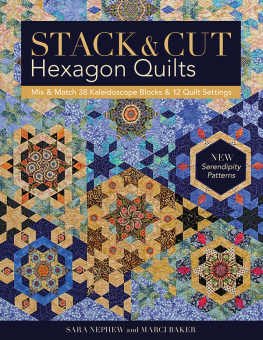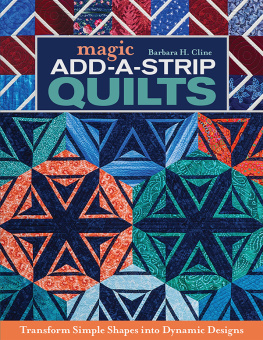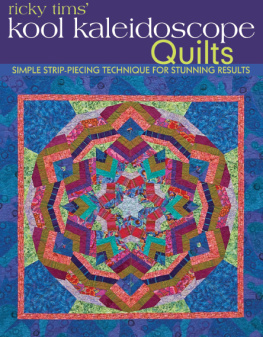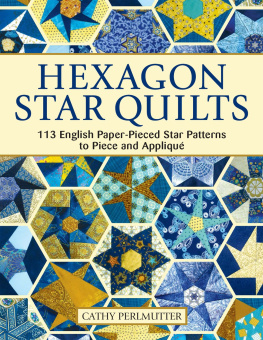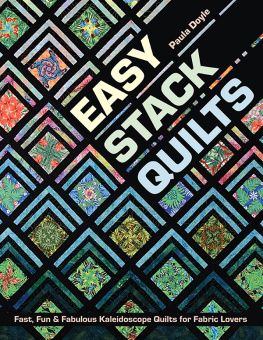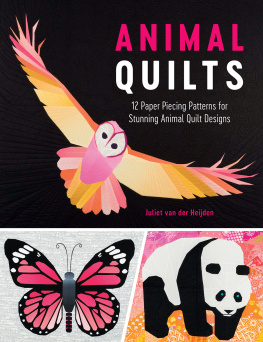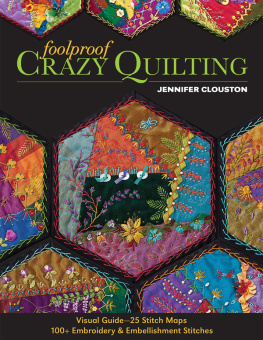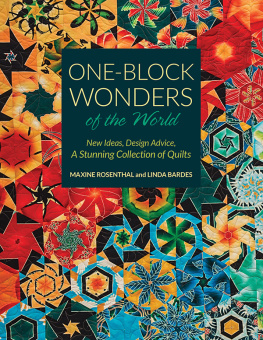Publisher: Amy Marson
Creative Director: Gailen Runge
Editor: Lynn Koolish
Technical Editor: Helen Frost
Cover/Book Designer: Page + Pixel
Production Coordinator: Tim Manibusan
Production Editor: Jennifer Warren
Illustrator: Linda Johnson
Photo Assistant: Mai Yong Vang
Instructional photography by Diane Pedersen and Mai Yong Vang of C&T Publishing, Inc., unless otherwise noted
Published by C&T Publishing, Inc., P.O. Box 1456, Lafayette, CA 94549
Dedication
To all the wonderful quilters Ive met.
Sara
In memory of Sue Baileymy mentor, cheerleader, and blessed friend.
Marci
Acknowledgments
Thank you to all the quilters who made beautiful quilts for Stack & Cut Hexagon Quilts: Virginia L. Anderson, Laurie Biundo, Janet Blazekovich, Benita Cole, Joan Dawson, Linda Rose DeGaeta, Becky Dietz, Martha Ethridge, Cindy Fredrick, Diane Gilbreath, Cindy Glancy, Janice Jamison, Katie Kennedy, Kathie Kryla, Kate McIntyre, Romona Melnick, Elaine Muzichuk, Alicia B. Sanchez, Pamela Seaberg, Kathy Syring, and Pamela York. Each creation provides an added beauty to this book. Additionally, we thank you for your feedback on our instructions and your trust in us to present your works in their best light.
Thanks to Joan Dawson and Virginia L. Anderson for their helpful tips and suggestions.
Thank you to the following companies that provided supplies for several of these projects: In the Beginning Fabrics, Maywood Studio, Presencia America, Quilters Dream Batting, and YLI Threads. Your support of the art and craft of quilting with superior products makes our jobs and passion even more enjoyable.
Lastly, we are also indebted to our editors and all the staff at C&T Publishing who made this book possible. Having been self-published for many years, we both have an appreciation for the process. C&T Publishings expertise takes our talents to a whole new level.
INTRODUCTION
Search the internet for The Three Princes of Serendip, and you will find an old fairy tale that emphasizes the usefulness of being serendipitouswatching for happy accidents you can benefit from because you are well prepared. Serendipity patterns show you how to use certain characteristics of printed fabrics to create new beauty and fun from simple kaleidoscope techniques. Stacking fabric layers with six repeats and cutting 60 shapes creates an all-new beauty.
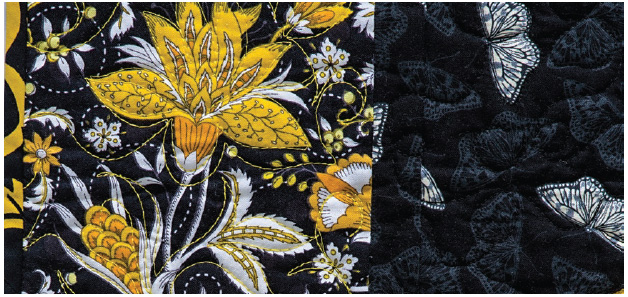
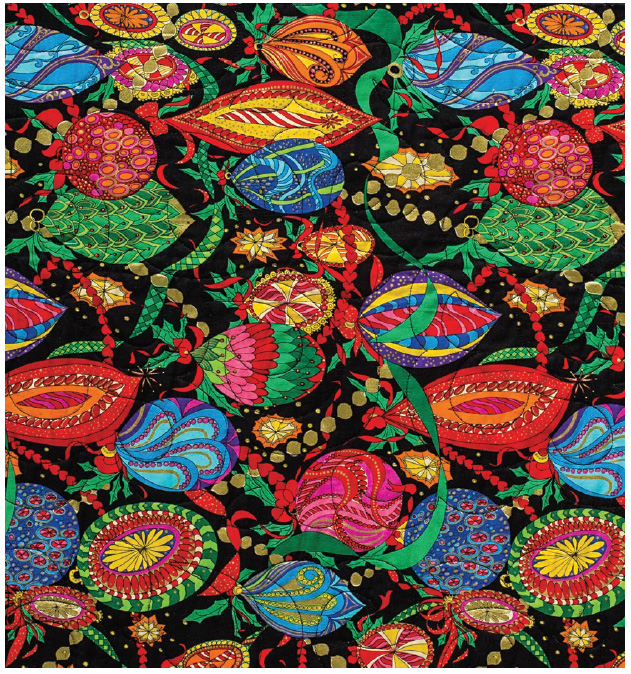
Sara Nephew began these designs with her books Serendipity Quilts and Doubledipity: More Serendipity Quilts. In this book there are 38 new block designs, many with much larger center shapes. Use traditional large-scale prints or more modern prints with these larger shapes for new kaleidoscope designs. With popular prints being larger in scale, the possibilities open up for a lot of wow! factor. Marci observed that the block designs frame each fabric-created kaleidoscope in Saras concept for these serendipitous quilts. Because the kaleidoscopes are separated, the viewer can appreciate the uniqueness of each and every one.
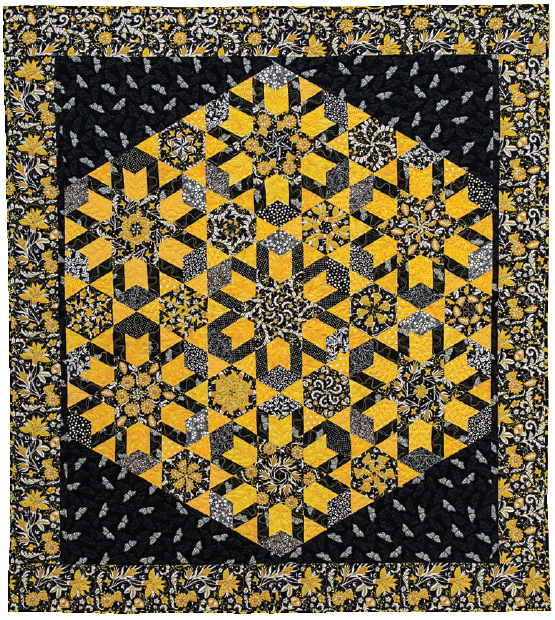
Ringstone by Joan Dawson
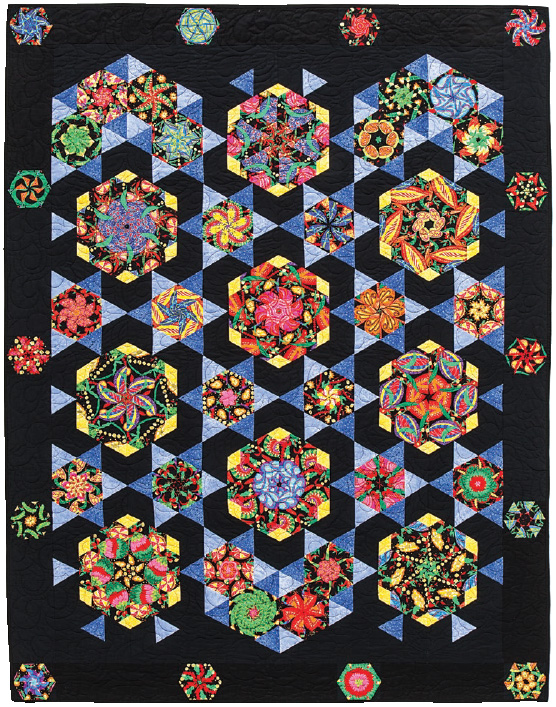
Button by Janet Blazekovich
tip
Sara has discovered that her fabric choices are becoming richer with detail as she makes more kaleidoscope quilts. The resulting quilts have more and more texture. After you have made your first stacked repeat quilt, you will find yourself looking at large prints in a whole new way. As you try another of these quilts, see if you grow toward working with more texture, as Sara has!

HOW TO USE THIS BOOK
We have designed Stack & Cut Hexagon Quilts so that you can collaborate with your fabric. Your choice of fabric allows you to design an incredible, individualized creation. Our methods for producing quilts are very different: Sara is an artist first, whereas Marci is an engineer by training. The way we view the world gives us very different ideas on the process.
With Saras method, yardage is only needed for the large-print, high-contrast repeat fabric. All the supporting fabrics are chosen as the project progresses, and if one material is insufficient, another is picked.
Marcis process requires some decisions to be made in advance and yardages to be determined. If one fabric runs out, her method allows you to find a substituteespecially if it is available in your stash and means one less trip to the quilt shop! (That way you are less distracted from the current project.)
In this book, weve provided different elements for you to choose from so you can mix and match, combining them into your own creation. To get started, read Tools, Selecting the Best Repeat Fabric, Preparing the Stacked Repeat Fabric, Cutting the Strips, and Planning Your Design.
Weve included two sample projects (Three-Block Table Runner and Eight-Block Quilt) that will show you how it all works. In both projects, weve explained what elements are chosen and how to figure yardage. Youll learn how to use the tables and diagrams provided with each block to gain confidence for your own project.
After you see how the process works, you are ready to choose the elements of your quiltthe block design , the quilt design, the setting triangles, and the borders and calculate your own yardage and cutting for the various elements.
Because there are so many variables, we leave it to you to figure out your backing, batting, and binding requirements. We highly recommend the All-in-One Quilters Reference Tool (by C&T Publishing) to help with this.
For inspiration, we will show you quilts using each block, quilts with different block quantities, and quilts with a variety of borders (see Quilt Designs). Seven of the many possible pieced borders have been developed into specific piecing instructions.
Because the focus of this book is on the elements that make up the quilts, we have placed the cutting instructions for the shapes near the back of the book. The methods are simple, and you will probably find that you become familiar and comfortable enough that you do not need to refer to this section. One practice that our students have found helpful in the beginning is to place a sticky note on the project pages and another on the cutting instructions; as you are working, you can easily move back and forth in the book as needed.
Refer to the following sections to figure out yardage:
Figuring Yardage for Supporting Fabrics
Using Multiple Fabrics per Shape
Figuring Yardage for Setting Triangles
Figuring Yardage for Pieced Borders
COLLABORATION: ARTIST AND ENGINEER
The more you work with these fabrics, the more skillful you will become at using color and pattern to build your blocks and compose your quilt. Each person has their own approach, and each way has its rewards. Here is what we experienced:
We decided to collaborate on sewing Knotted Cord (below right). Marci brought the repeat fabric and a bunch of jewel tones. We were in Saras sewing room, full of a wide variety of fabrics. Marci cut and pressed while Sara sewed. There was some discussion between us about which repeat design was the best to put in the center, what colors to use in the corner diamonds of the blocks, and so on.
Next page
